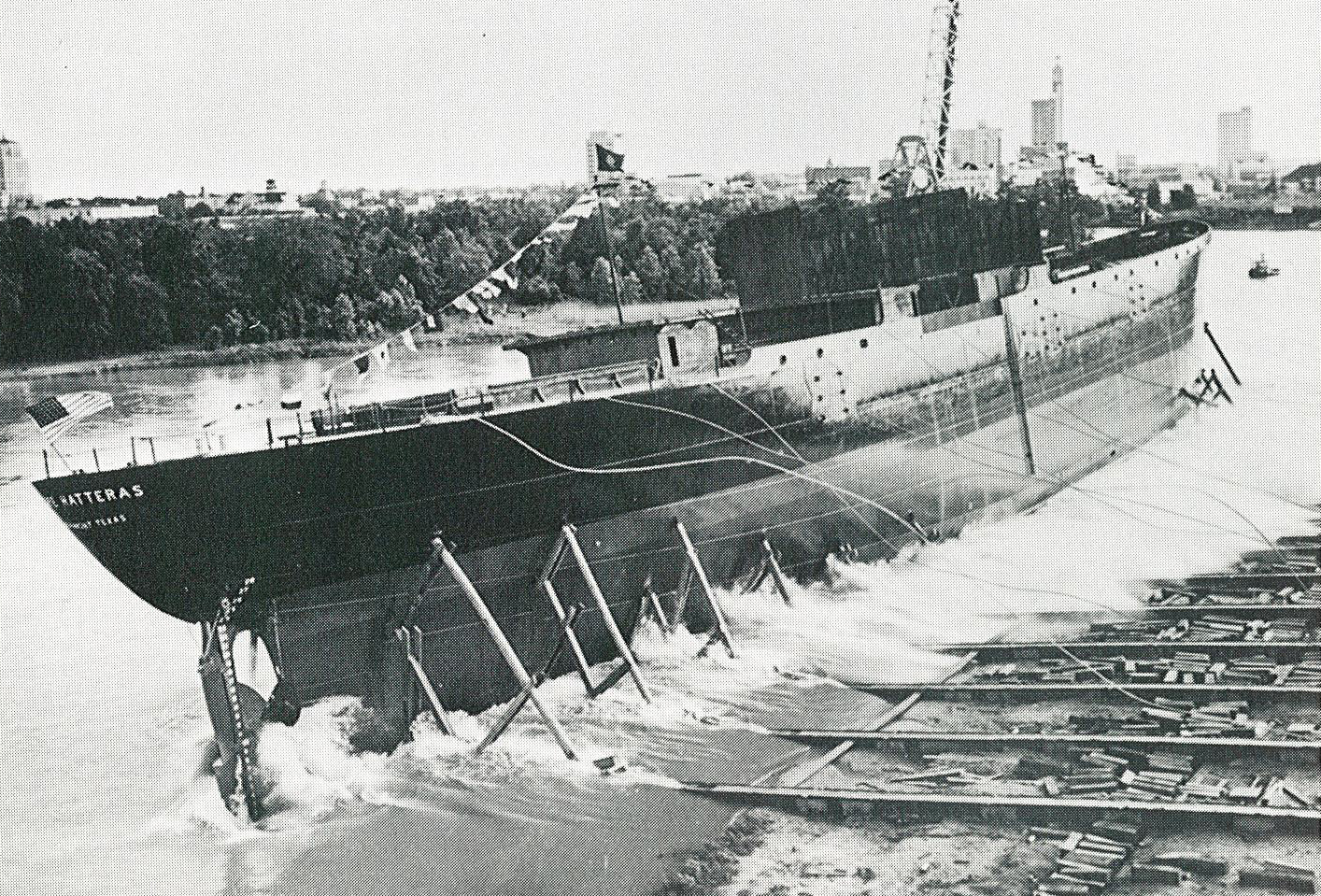WORLD WAR II IN BEAUMONT
by Judith Linsley
The Great War that ended November 11, 1918, was supposed to be the last global conflict. In 1939, however, war erupted in Europe and threatened in Asia. Americans began ramping up defenses and military production and, in 1940, reinstituted the draft.
On December 8, 1941, one day after the Japanese attack on Pearl Harbor, the United States entered the war. After that, the war effort dominated American life.
Beaumont men joined the military and served in every area of the war theater; 114 of them fought with Company C, 143rd Infantry of the Texas National Guard's Thirty-Sixth Division, in the African campaign and the bloody Allied advance into Italy and southern France. Women enlisted as nurses or in one of the military's female auxiliaries.
Many Beaumont families sent more than one member into service. Three of the five sons of Mr. and Mrs. B.H. Wing were killed, a fourth held prisoner, and a fifth hospitalized with post-traumatic stress syndrome. Four Cokinos brothers--Andrew, Jimmie, Pete, and Mike--served, and two were decorated.
On the home front, Beaumonters oversubscribed the first War Bond drive by $278,000 in five hours, earning the right to have a bomber named for the town. Red Cross volunteers welcomed servicemen on leave from Fort Polk, Ellington Field, and other nearby bases, as they attended socials at the YWCA and Edson Hotel and danced with well-chaperoned "Victory Belles." The Melody Maids, a local high school girls' group, sang at military bases all over the world. Other women worked in local industry as welders, machinists or pipefitters.
Men exempt from the draft through age, health, or "essential industry" employment served in the Home Guard or the Civil Air Patrol. CAP pilots patrolled the Gulf of Mexico for enemy submarines. Men and women waited by air raid warning phones or in observation towers or organized blackout drills. "Coastal Cowboys" patrolled Jefferson County beaches on horseback.
Local plants, foundries, and fabrication shops converted to war production, some making synthetic rubber components or parts for ship propellers. Pennsylvania Shipyards built C1-A freighters and other government vessels; employment soared from a few hundred to 9,100 by 1945. Magnolia Refinery stepped up production of fuel, then shipped it from the Port of Beaumont to destinations around the world.
Between 1940 and 1943, Beaumont's population increased from 59,000 to an estimated 80,000. Multimax Village, a 600-unit wooden complex built in 1942, barely alleviated the housing shortage. Many workers lived outside of town and commuted daily.
Beaumonters lived with rationing of meat, sugar, leather, rubber, and gasoline, and limited supplies of other things. "Use it up-Wear it out-Make it do-Or do without" became a way of life. Rice farmers formed the Texas Rice Improvement Association to develop improved rice varieties and eventually utilized German prisoners of war in area rice fields.
When the war ended, Beaumonters celebrated and moved on. But they, along with other Americans, left a legacy of unity and cooperation unsurpassed in our country's history.
David H. Falloure, Deep Water: The Story of Beaumont and Its Port (Virginia Beach, Virginia: Donning, 2016). Charlotte A. Holliman, "Beaumont Women During World War II," Texas Gulf Historical and Biographical Record, Vol. 31, November 1995. Judith Walker Linsley and Ellen Walker Rienstra, Beaumont: A Chronicle of Promise (Woodland Hills, California: Windsor, 1982). John H. Walker and Gwendolyn Wingate, Beaumont: A Pictorial History (Virginia Beach, Virginia: Donning, 1983).

The Cape Hatteras, a C-1 cargo vessel built at Pennsylvania Shipyards, is launched during World War II.